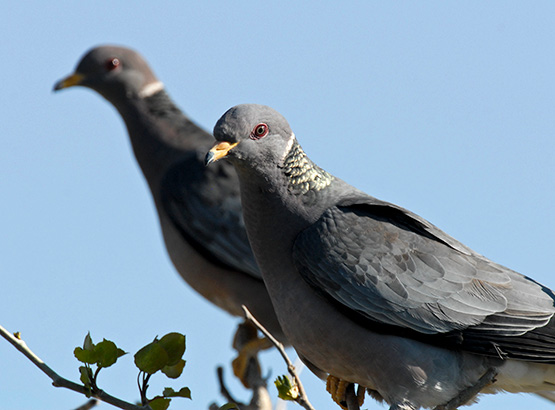Band-tailed Pigeon
As migratory birds, band-tailed pigeons are only present in Arizona from late March through mid-October. They nest in mixed conifer forests, ponderosa pine forests, or in dense stands of evergreen oaks and pines between 4,500 and 9,100 feet elevation. Breeding starts in May and continues through the summer. Individual birds can nest twice and sometimes three times in a year. A normal clutch is one but occasionally two glossy white eggs, are laid.

About
Band-tailed pigeons live in mixed conifer forests, ponderosa pine forests, or in dense stands of evergreen oaks and pines between 4,500 and 9,100 feet elevation. They are about the size of a domestic pigeon, and adults weigh about 8 ounces. Both sexes have an overall blue-gray appearance, and it is only after close inspection that one notices the male’s rosier breast and more iridescence on the nape of the neck.
Natural History
Band-tailed pigeons are sometimes confused with domestic or feral pigeons that are often seen in cities and towns. In autumn, adults can be differentiated from their young by the adult’s chrome-yellow bills and feet, white crescent at the nape of the neck, and the dark gray band across the top of the tail that gives the bird its name. After feeding on acorns and other fall mast crops, most Arizona band-tailed pigeons migrate to the Sierra Madre Occidental in Mexico to spend the winter months.

Our Mission
To conserve Arizona’s diverse wildlife resources and manage for safe, compatible outdoor recreation opportunities for current and future generations.
Hunt Regulations
Rules and regulations for hunting in Arizona.
Regulations for spring hunts, fall hunts and pronghorn, elk hunts.
